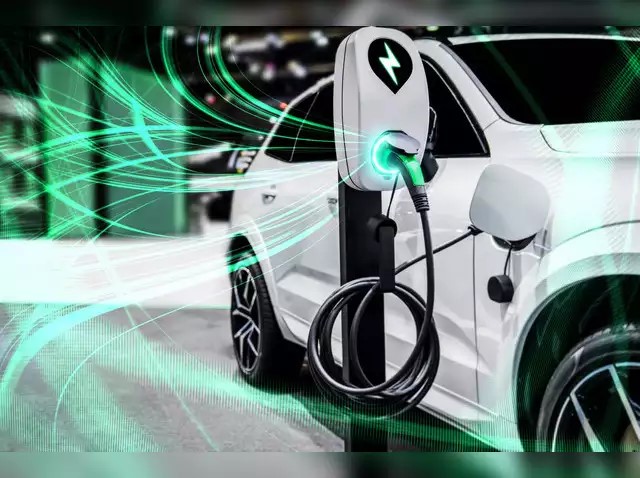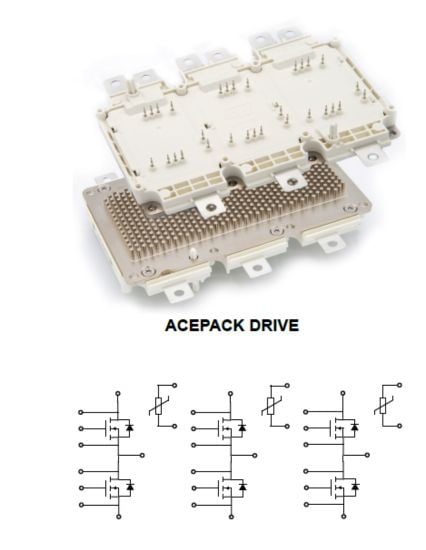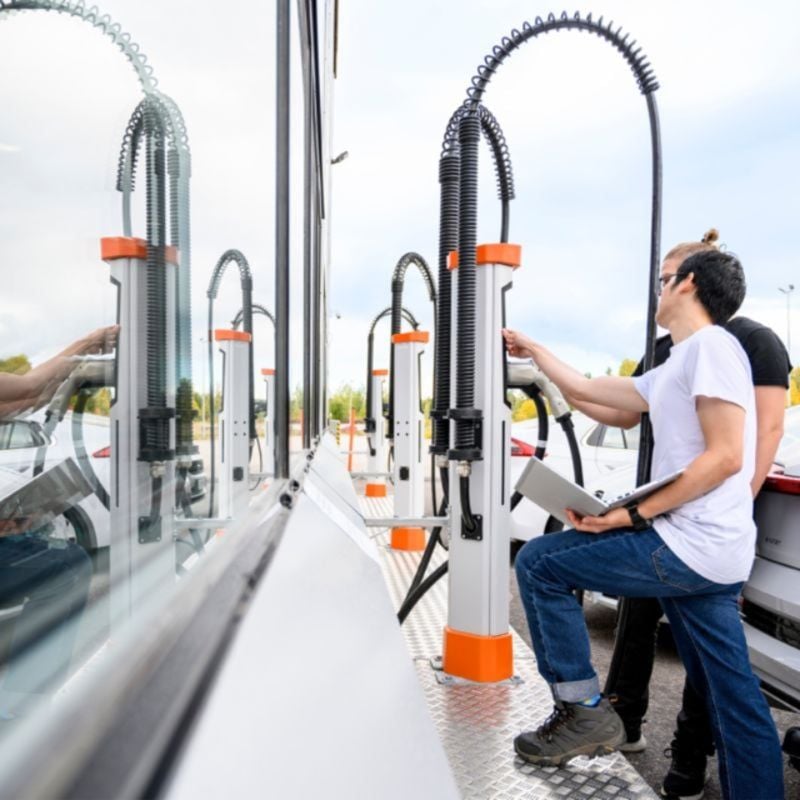Advancements in Electric Vehicle Power Technologies: Anticipating the Changes in 2024
Exploring the upcoming trends in power products and innovations for 2024 that are set to influence electric vehicle (EV) powertrain design, battery configurations, and the framework for charging solutions.
Throughout 2023, the primary focus areas for the creators of EV power systems and components have been enhancing power density and elevating efficiency. These characteristics are vital for electronic original equipment manufacturers (e-OEMs) responsible for producing EV frameworks that offer extended driving ranges, accelerated and more user-friendly charging options, all while remaining economically feasible for consumers.

What can we expect in 2024 for electric vehicles?
Electric Powertrain Innovations
At the core of the electric vehicle (EV) propulsion system lie the traction inverter and the electric motor, which transform the energy stored in the battery into the mechanical force that drives the vehicle.
The use of silicon carbide (SiC) and other wide bandgap semiconductors is anticipated to persist in popularity to enhance higher-voltage powertrains, which are aimed at greater efficiency and minimizing I2R losses during power transmission. SiC-based converters can achieve higher power capacities and maintain lower on-state resistances (RDS(ON)), improving overall efficiency and performing reliably even at higher temperatures. This leads to a lighter power system per power unit, yielding extended driving distances and the need for smaller, more cost-effective, and more easily rechargeable battery packs.
The trend of packaging breakthroughs, including the development of wafer-level chip scale packaging and the use of bare die, is expected to continue, with a keen focus on minimizing the size and weight of solutions. Further advancements are anticipated in power module integration, which aims to compact the overall size. The deployment of fully verified, ready-to-use bridge power modules (in configurations like 2, 4, and 6-pack) is poised to streamline design processes and trim expenses by diminishing Bill of Materials (BOM) counts and streamlining supply chains.
ACEPACK DRIVE power module.
However, integrated modules do not offer the flexibility of “roll-your-own” designs, so high-end vehicle applications with fewer cost constraints will allow designers to construct traction inverter circuits and other power conversion blocks using discrete power components optimized to the specific performance goals of the vehicle, such as range, charge time, or cost.
The
EV powertrain and traction inverter market is large and growing, so
along with SiC, power device manufacturers will also target these
high-performance applications with gallium nitride (GaN) solutions. GaN
circuits can operate at very high frequencies that allow for more
compact designs but must demonstrate the ability to operate at
increasingly higher powertrain bus voltages.
Securing Future Supplies of Wide Bandgap Semiconductors
Looking towards 2024, expectations point to electronic original equipment manufacturers (e-OEMs) and key Tier 1 suppliers seeking to lock in long-term agreements for the supply of wide bandgap devices. Yet, prudence is advised for both parties involved, as the EV market is subject to rapid fluctuations. While government incentives are playing their role, recent trends have shown a softening in consumer demand for EVs, making long-term contracts potentially risky for both suppliers and automotive manufacturers financially.
Electric vehicles represent a revolution in automotive technology, and their market penetration is not expected to follow a straight trajectory. It's challenging to grasp the complexity inherent in overhauling an industry of the magnitude of the global automotive sector, transitioning from a century-old reliance on internal combustion engines to adopting a nascent electric powertrain technology.
Enhancements in Electric Vehicle Battery Technologies
As we approach 2024, the prospects are bright for innovations in battery systems to progress relentlessly, aiming to amplify energy storage density, enhance safety measures, and drive down costs.
We are poised to witness not only refinements to the current lithium-ion battery chemistries but also intensive research endeavors around novel battery technologies, like solid-state systems, which hold the promise of even superior energy densities. Over the course of 2023, there was significant exploration into alternative anode materials to bolster energy storage capabilities, and advancements were made in the development of cost-effective cathode manufacturing methods to diminish overall battery expenses. Such innovations are expected to persist into 2024 and well into the future.
IMMERSIO Cell-to-Pack (CTP) EV battery pack.
Maximizing Existing Battery Technology Performance
In the realm of battery performance, the focus lies on maximizing the potential of existing technologies. As we look ahead, battery management systems (BMS) and their methodologies are set to evolve, capitalizing on sophisticated cell diagnostics, software enhancements, and the integration of cutting-edge processing technologies such as artificial intelligence (AI) and machine learning (ML). Such advancements will refine our comprehension of battery behaviors, enabling the safe expansion of operational capabilities—including energy storage capacity, reduced charging times, and increased power output.
Among the innovations that influence battery performance are the modular construction of battery packs from discrete cells and the optimization of thermal management systems for batteries. These aspects play a critical role in improving not only efficiency but also the longevity and reliability of battery systems.
In the context of complex technologies like those found in batteries, progress tends to be gradual. A timespan as brief as 12 months rarely suffices to produce radical breakthroughs. However, steady advancements along multiple aspects over longer durations will certainly contribute to the continuous enhancement of battery technology and its capabilities.
EV Charging Infrastructure Development in 2024
The advancement of electric vehicle (EV) charging infrastructure, especially in terms of accessibility to reliable, cost-effective, and safe charging options, is set to be a key driver for innovations in power systems by 2024. Level 3 fast chargers are expected to be at the forefront of this transformation.
Public initiatives and government incentives are likely to continue bolstering the deployment of direct current (DC) fast charging stations. There is a concerted effort to expedite this rollout, particularly in locations that will most benefit the public.
Concurrently, as EVs transition to 800-volt powertrain buses or even higher, there is a compelling need for fast chargers to ascend to new realms of functionality. Chargers will need to adapt to these increased voltages and power competencies to enable swifter and more energy-efficient battery recharging.
This demand will stimulate further innovation in wide bandgap semiconductors, such as silicon carbide (SiC) and gallium nitride (GaN). The components and rectifier modules crafted from these materials will be an essential part of this evolution, thanks to their capacity to handle elevated voltages and achieve higher power densities while maintaining superior conversion efficiency. Such breakthroughs will play a crucial role in bringing about a more robust, rapid, and efficient EV charging infrastructure by 2024 and beyond.
Kempower Satellite DC fast chargers.
Level 1 and 2 EV Charger Evolutions and OBC Developments
Moving forward into 2024, development in Level 1 and Level 2 EV chargers will aim to achieve higher power capacities. The goal is to offer shorter charge times, alongside more affordable pricing strategies to enhance the widespread availability of these chargers in diverse environments such as cities, suburbs, and homes. While wide bandgap technologies will play a role in this progression, advancements in silicon power electronics, including MOSFETs and IGBTs, will also be vital to meet the aggressive cost targets for these applications.
Simultaneously, within the electric vehicle itself, the onboard charger (OBC) remains an essential component, facilitating the power conversion from AC to DC to replenish the vehicle's batteries from Level 1 and Level 2 chargers. The rivalry between GaN and SiC power conversion technologies will intensify as they strive to excel in power density and conversion efficiency. This competition will likely lead to reduced charging times and extended driving ranges, while continuing to focus on cost minimization.
Although currently the OBC is a crucial element of EV architecture, as we look further into the future, it is quite plausible to envision an era where EV charging gradually transitions entirely to higher voltage DC charging systems. This paradigm shift would nullify the necessity for complex and pricey OBC circuitry within electric vehicles.
Should power conversion technologies evolve to accommodate higher voltages and power levels at more palatable costs, it is conceivable that DC charging configurations might diffuse into public and residential charging scenarios. These chargers may not match the robust power levels of AC mains-linked DC fast chargers, but they could offer a standardized charging interface that would streamline EV design and lead to cost reductions. The narrative of charging infrastructure could thus be significantly simplified, establishing a more homogenized and economically viable EV charging ecosystem.


_EV_battery_pack_1_1741010617612894208.jpg)







